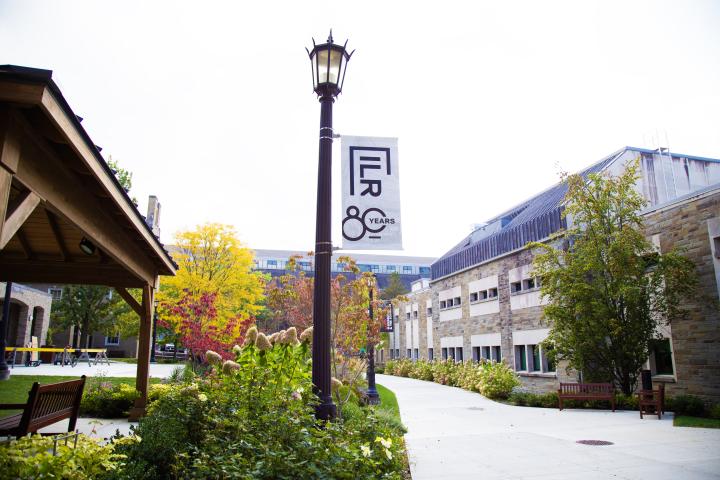
Cultural Capital
An ILR-produced report on New York state's arts and entertainment work force is being finalized by the school's research team and advisory group before being submitted to the Empire State Development Corporation.
The state's lead economic development agency "has a special interest in programs which assist in the revitalization of upstate communities and in linkages between training and employment," said Lois Gray, who wrote the report with Maria Figueroa, ILR's director of Labor and Industry Research.
Gray, Jean McKelvey/Alice Grant Professor of Labor Management Relations Emeritus, said the study was funded by a $250,000 grant from the Empire State Development Corporation.
Findings from "Empire State's Capital Culture at Risk? Assessing Challenges to the Workforce and the Education Infrastructure for Arts and Entertainment in New York State" include:
- The arts and entertainment industry is a growth engine for New York state, generating more than 222,000 jobs in 2006. The industry had an estimated economic impact of $25.7 billion in 2005.
- The Bureau of Labor Statistics projects overall growth in arts and entertainment employment of New York state through 2016, with major growth in positions including multi-media artist and animator, curator, designer, entertainer and performer.
The state's 259,000 arts professionals, concentrated in New York City and six other locations around the state, are mostly under age 40 and educated with a bachelor's or graduate degree.
They work in the live performing arts (theatre, music and dance), electronic media (film, broadcast, sound recording and Internet) and visual arts (museums, galleries and art dealers).
Unionization is prevalent in some industry sectors and rare in others, according to the report. Performing arts workers are highly unionized. Work in the new media is less likely to be covered by union contracts and unionization is rare in the visual arts sector.
Some of the report's findings cite struggles within the industry and for the workers themselves:
- New York's skilled arts workforce -- the industry's key competitive advantage -- may be at risk as a result of unstable employment, low income, high cost of living and lack of adequate support services.
- One of three workers in the industry earns $20,000 or less a year.
- The proportion of self employment is four times higher than the pattern for the New York workforce.
- The industry's non-profit sector is threatened by financial issues.
- Minorities and women are under-represented in higher-paid occupations.
- Sound recording is challenged by the dramatic growth of digital distribution resulting in illegal file sharing and piracy.
- Interactive games, a potential growth sector, lacks support structure.
- Film and television production faces increasing competition from states and countries which offer larger tax subsidies.
New York's wealth of educational and training facilities for arts-related occupations is a key component of its creative infrastructure. According to the report:
- New York's 815 post-secondary degree or certificate offerings in the arts encompass a wide variety of disciplines and are geographically dispersed throughout the state.
- In 2006, more than 25,000 individuals completed programs in arts and media disciplines in New York state. This number comprises 11 percent of the 2006 United States total in arts and media disciplines.
- The growth in the number of graduates from education and training programs exceeds the rise in employment in New York-based arts organizations. The surplus is particularly pronounced in music, dance and fine arts.
Some executives of arts organizations and unions question the link between education and employment in the industry, the report said, citing concerns:
- For technical and craft occupations, classroom training may not match job requirements.
- Courses in management and administration may not be sufficient or well-tailored to the needs of this industry.
- Training institutions rarely assist in placement or trace graduates' careers.
- Affordability is a key concern of artists, expected to fund their own education before entering the field and continuously through their careers.


